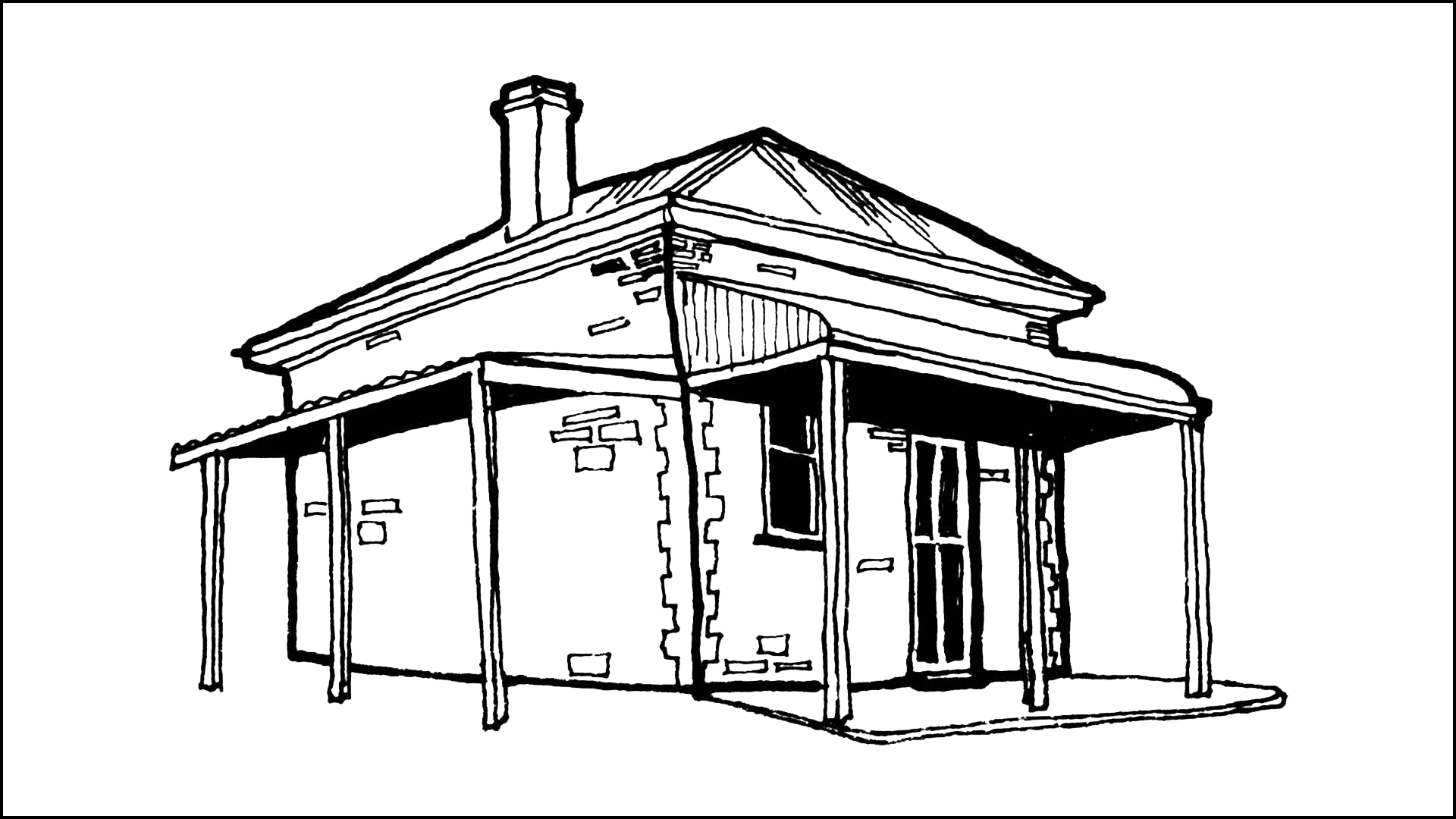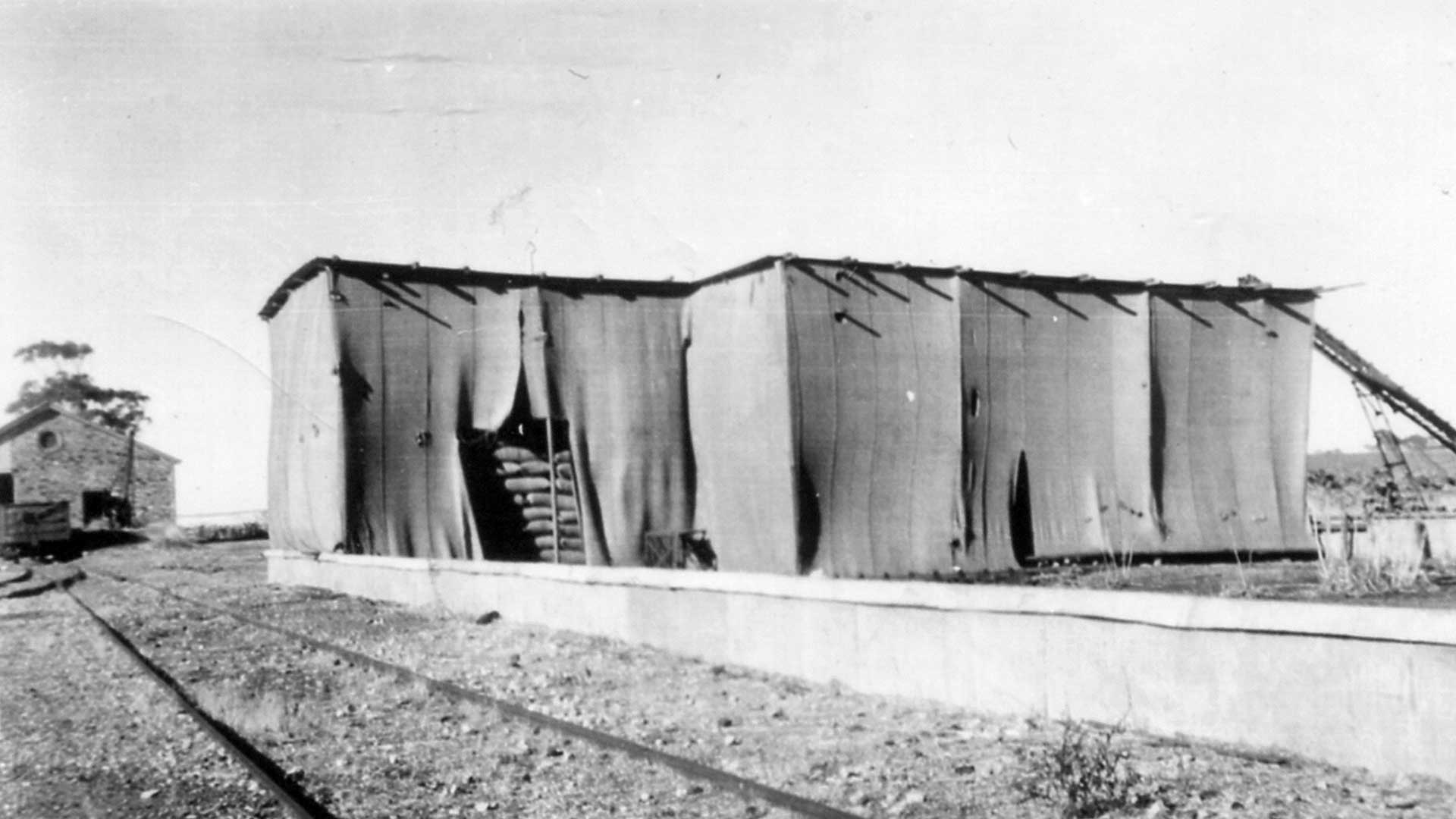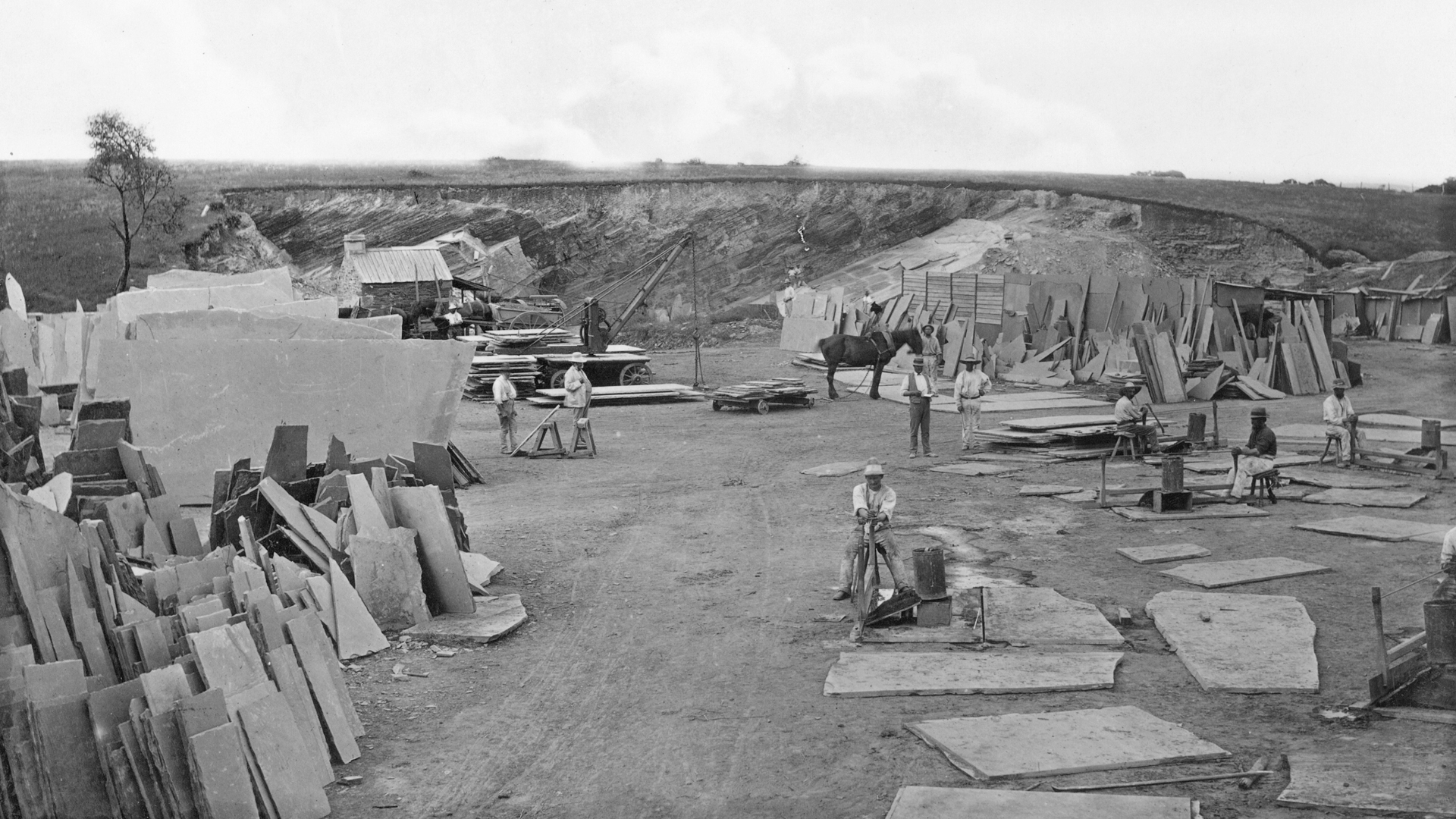HIstoric MIntaro
A remarkably well preserved and rare example of an early colonial rural town, the township of Mintaro was declared a State Heritage Area in 1984. Mintaro’s growth was short-lived and spontaneous. This can be seen in its close village settlement, irregular street plan and predominant mid nineteenth century stone buildings.
Mintaro’s historic character was shaped by two important mining industries in nineteenth century South Australia. In the 1840s and 1850s it became an early staging point for bullock teams carting copper from the Burra mines to Port Wakefield, and from the 1860s onwards, it was South Australia’s leading producer of high quality slate.
Between 1848 and 1851 several villages were established along the Gulf Road to take advantage of the trade generated by the bullock traffic. Among the first of these was the village of Mintaro.


Township of Mintaro
The origins of the township date back to 1848 when the Patent Copper Company re-routed bullock waggons carrying copper ore, past Mount Horrocks on James Stein’s pastoral run, to Port Henry (now Port Wakefield). They carried imported coal back along the Gulf Road to fuel the workings of the Burra mines. The company purchased the sections of land now known as Kadlunga in order to provide feed for the many horses working in the mines and in 1849 Henry Gilbert recognising the area as a resting and watering stop on the Gulf Road route purchased sections 187 and 316 in the Hundred of Clare and had them subdivided as the township of Mintaro.
Many of the stone buildings built between 1850–1860 remain and indicate a prosperous period in Mintaro’s history. One of the earliest of these is the Magpie and Stump Hotel. Originally called the Mintaro Hotel, it was built in 1850 for Matthew Bailey Muir the towns first publican. Mintaro township grew quickly, servicing the many needs of the teamsters passing through the town and stopping to rest their bullocks and themselves on the journey to Port Wakefield. Many new business were established including Reilly’s the bootmaker, general stores, blacksmiths, wheelwrights, carpenters and undertakers, and as the town’s population grew so did the need for schools, churches and cemeteries.
From 1851 many of the bullock teamsters left South Australia for the riches to be found on the Victorian goldfields, creating a major lack of teams to transport the copper ore on the Gulf Road. In response the now English and Australian Copper Company imported mules and Spanish-speaking muleteers from Uruguay, South America in mid 1853. In 1857 Mintaro experienced a decline when these copper teams were rerouted through Riverton to the new railway terminus at Gawler. This was only relieved with the growth of the slate quarry and closer agricultural settlement by the 1860s.

The Railway & Agriculture
Seven kilometres east of the town is Mintaro railway station (renamed Merildin in 1917). It was built in 1870 when the northern railway line was extended from Roseworthy to Burra. Despite the closure of the Burra mines in 1877 Mintaro was well placed to continue as an agricultural service centre. The fertile farming district was able to reap the rewards of excellent wheat and wool prices during South Australia’s rural boom of the 1870s and early 1880s.
This wealth was reflected in two large pastoral properties near Mintaro. Both Martindale Hall, completed in 1880 for Edmund Bowman, and Kadlunga homestead, purchased in 1881 by the Chief Justice Sir Samuel Way, reflected a way of life akin to that of the English gentry. Mintaro, like rural village counterparts in England, provided these properties with a ready source of local labour.

Slate Quarry
Mintaro is probably best known as a producer of slate — the highest quality in Australia and of outstanding strength and durability. Mintaro’s slate quarry was first opened in 1854 by Peter Brady. In 1856 he leased it to Thompson Priest, a stone mason, who worked the quarry very successfully, sending to England for Cornish miners. By the early 1880s there were about 50 men employed at the quarry, which has continued to be a major source of employment. The Mintaro quarry is one of the oldest continuously producing quarries in Australia. Seen in the slate buildings, chimneys, tanks, wash troughs and paving around the town the use of slate gives a special character to Mintaro.

Exploring Historic Mintaro
There are many ways to explore Mintaro’s local history and heritage. Amble around and take in the early slate and stone buildings in the towns peaceful setting at the base of Mt Horrocks, or follow the self-guided walking tour and find out more about the early owners and functions of the buildings. You can get up close to some of the buildings by visiting the Magpie and Stump Hotel or Reillys Wines Cellar Door and Restaurant to see how they were built and some of their special features.
You can walk or drive to see the public cemetery, catholic church and cemetery, slate quarry, Mortlock Park recreation reserve, and Martindale Hall.
Further afield is the historic Merildin railway station and former township of Ennis, the Polish Hill River region, and the nearby historic settlements of Manoora, Farrell Flat, Auburn, Leasingham, Watervale, Penwortham and Sevenhill.
We hope you enjoy the rich early colonial history the region has to offer.
